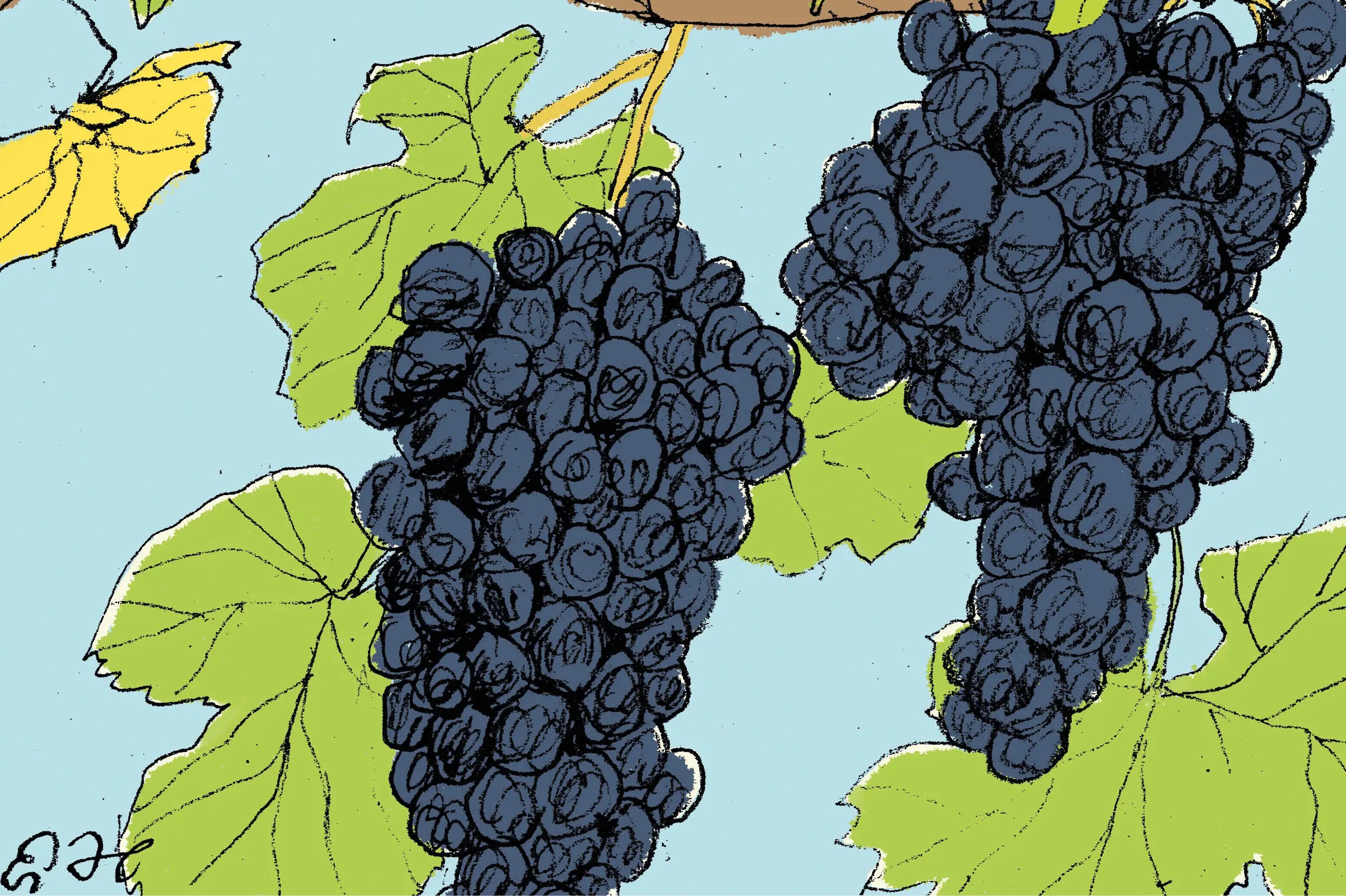One of the great stories in the world of wine over the last half century is the rebirth of Greek wine.
I say “rebirth” because wine has been an inextricable part of the story of Greece from time immemorial. What would Plato’s Symposium — literally “drinking party” — be without wine? And the story of Greek wine goes back much further than that. According to experts, wine grapes have been cultivated in Greece from about 6000 BC. Anyone who has read Homer recalls his frequent deployment of the epithet “οἶνοψ πόντος.” That is usually translated as “wine-dark sea,” though it literally means “wine-faced” or “wine-eyed” (οἶνος + ὄψις) sea.
What color do you suppose “wine-dark” is? A lot of ink has been spilled pondering that question. In his spare time, when he wasn’t running the British government or catechizing prostitutes late at night on the streets of London, William Gladstone was a high-functioning classicist. In his 1858 Studies on Homer and the Homeric Age, Gladstone argues that the Greeks of Homer’s time had no word for “blue.” His main point is that colors at that time were described not in terms of hue but in terms of their intensity, their lightness or darkness.
I am pleased to report that that is a subject about which I am not required to have an opinion. I had always assumed that “wine-dark” was deep purple or reddish blue. But who knows? Maybe it just means “brooding,” “tempestuous.” There is plenty of red wine in Greece these days, as presumably there was when Achilles chased Hector around the walls of Troy. But I think it is fair to say that most of the best Greek wine is white or rosé. (One organic boutique rosé, which I have never tasted, is called LΛPO. Made predominantly from the Moschofilero grape in the Peloponnese, it sells for about $1,300.)
There are some 350 indigenous grape varieties spread across the Greek mainland and innumerable volcanic islands dotting the Aegean. It’s a dizzying constellation. And that doesn’t count the many European and American varietals (Cabernets, Chardonnays, Sauvignon Blancs, etc.) that have made their way to Greece.
Thirty or forty years ago, for many of us “Greek wine” meant retsina, whose vessels were sealed with Aleppo pine resin. That imparted an intense, not to say overwhelming, evergreen aroma. Some people like it. A friend spoke for the rest of us when he said that he preferred to look at Christmas trees, not drink them.
I think my first extensive exposure to Greek wine came in the mid-1990s when I sailed with friends up the Turkish coast from Rhodes to Bodrum, aka Halicarnassus. We stopped frequently along the way. Some stops were for sightseeing only, but many included a meal accompanied by Helios wine, a serviceable but pedestrian white wine also made from Moschofilero but costing a little more than a hundredth of LΛPO.
I have recently made a mini tour of Greek wines and am pleased to share the fruits of my research. First up is a wine from Cyprus, which used to be part of Greece. I am not sure what the Greek for “cépage” is, but the 2023 “Aerides” from the Makarounas win- ery in Paphos in southwest Cyprus was 100 percent Xynisteri. Paphos is not the most distinguished winemaking area of Cyprus, but “Aerides” was aromatic, delicate, delicious. It was also about $20.
Another nice summer wine is the 2023 Kydonitsa from Nikolaou in the Peloponnese. It is a dry but flinty rich white wine with a slight pétillance and adumbrations of quince. It, too, was a reasonable $20.
Perhaps the most famous grape in Greek winemaking is Assyrtiko (also called Arcytico, Assirtico, Assyrtico, Asurtico, and Asyrtiko). It is indigenous to the Cycladic island of Santorini (about which more in a moment) but has thrived throughout Greece and as far afield as California and North Carolina. I sampled a very presentable instance from the bustling Muses Winery in the Valley of the Muses at the foot of Mount Helicon in Boeotia. The 2022 “Crispy Assyrtiko” features a constellation of mineral accents, predominated by hints of lemon and green apples. You can find it for about $22.
I would be remiss if I did not say a little more about Assyrtiko’s native island, San- torini, the southernmost of the Cyclades, just north of Crete. The story of Assyrtiko on the island is ancient, but recent chapters are full of pleasant surprises. Since 1991, Paris Sigalas has been making excellent wine on Santorini. The 2022 “Epta-Seven” from Domaine Sigalas is outstanding: delicately aromatic, complex, taut but also luscious. It’s about $90 but worth every drachma.
This article was originally published in The Spectator’s September 2024 World edition.


























Leave a Reply